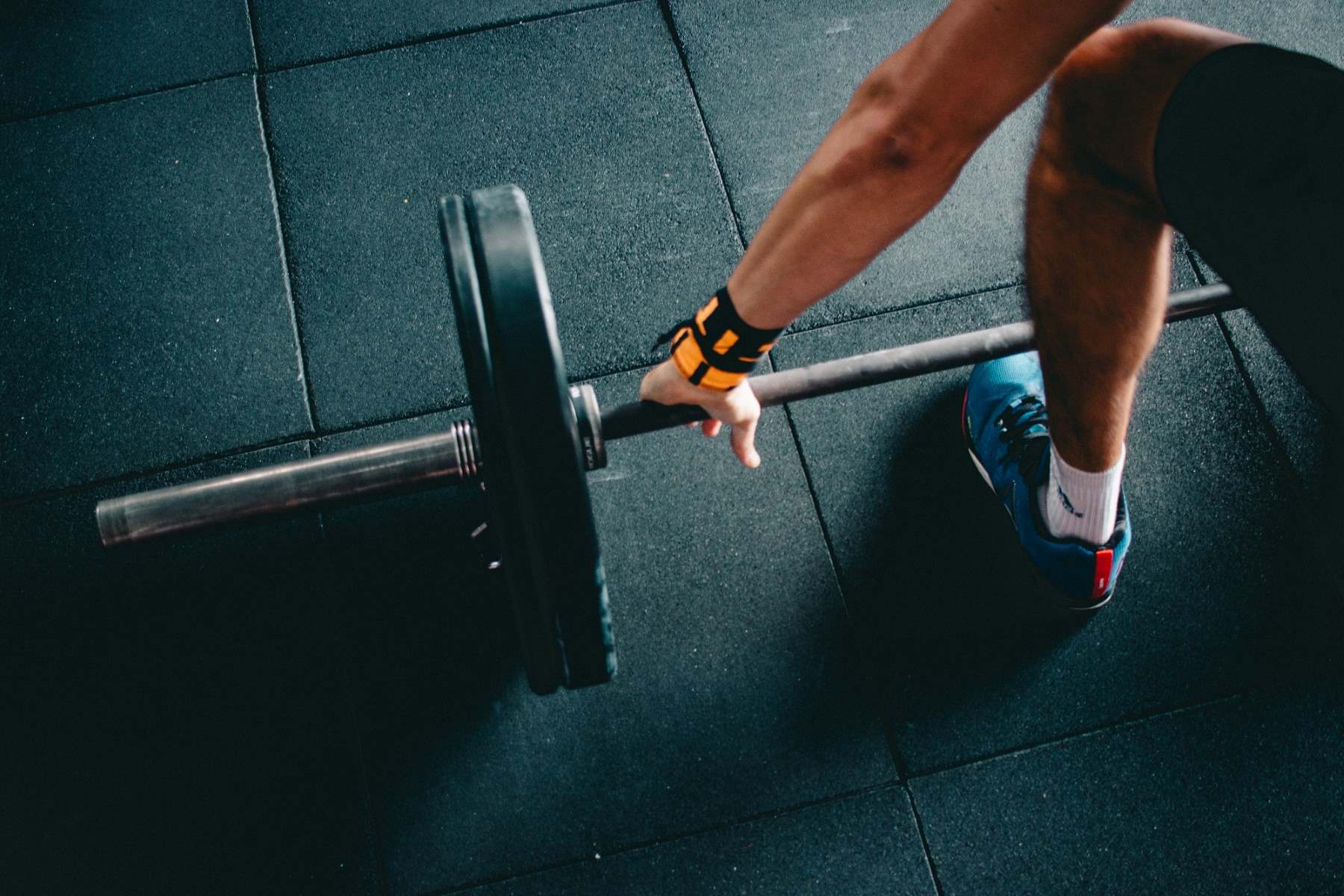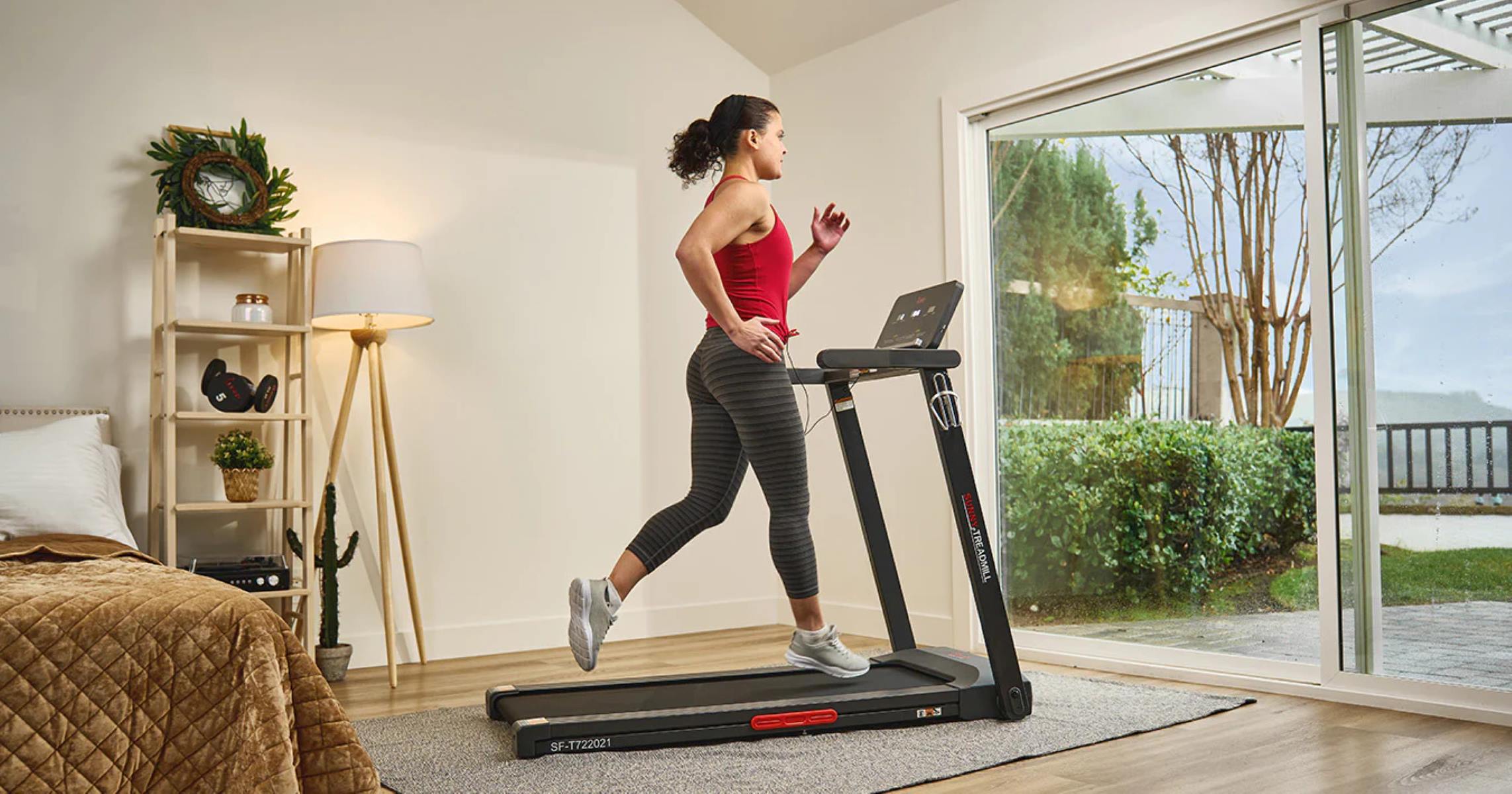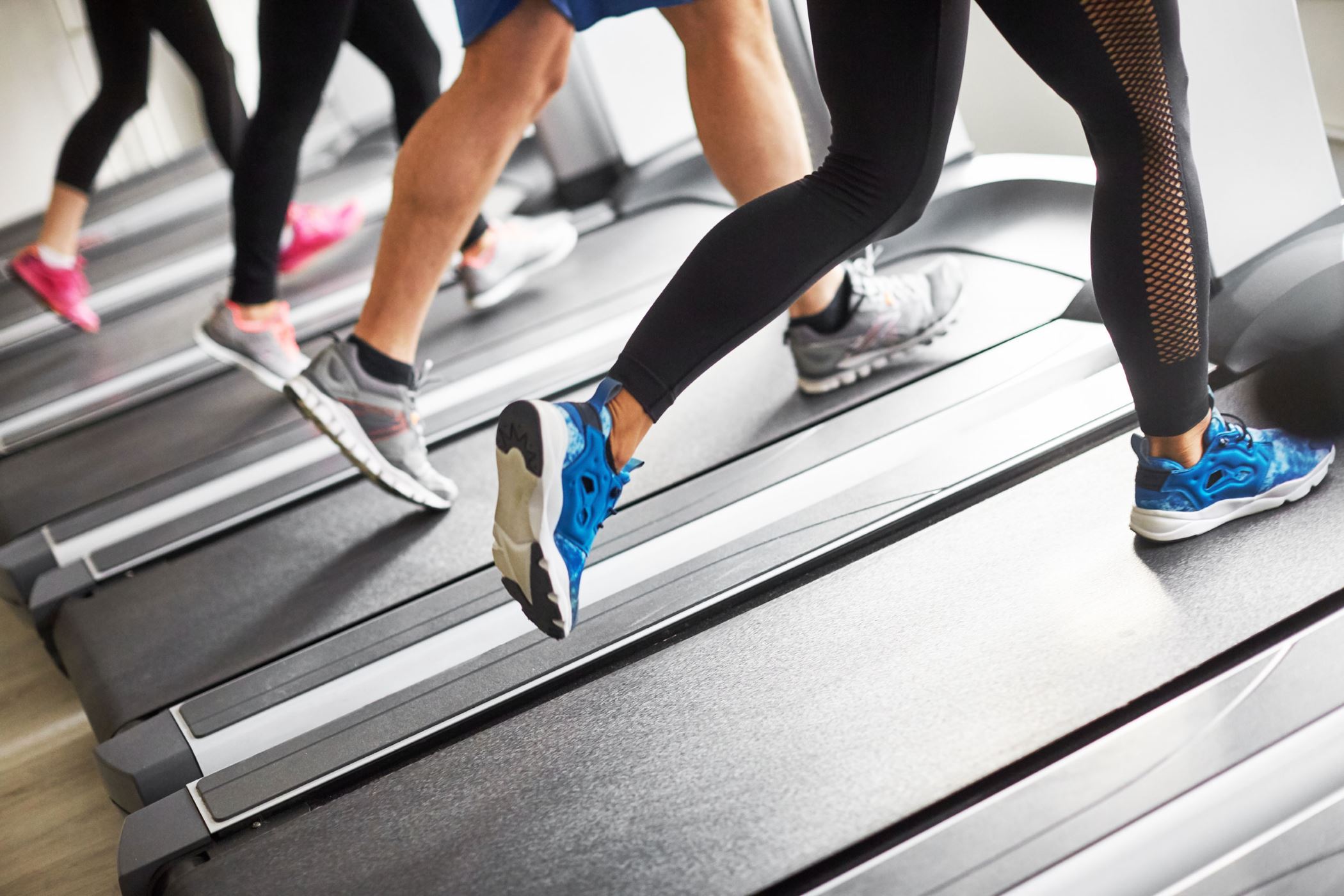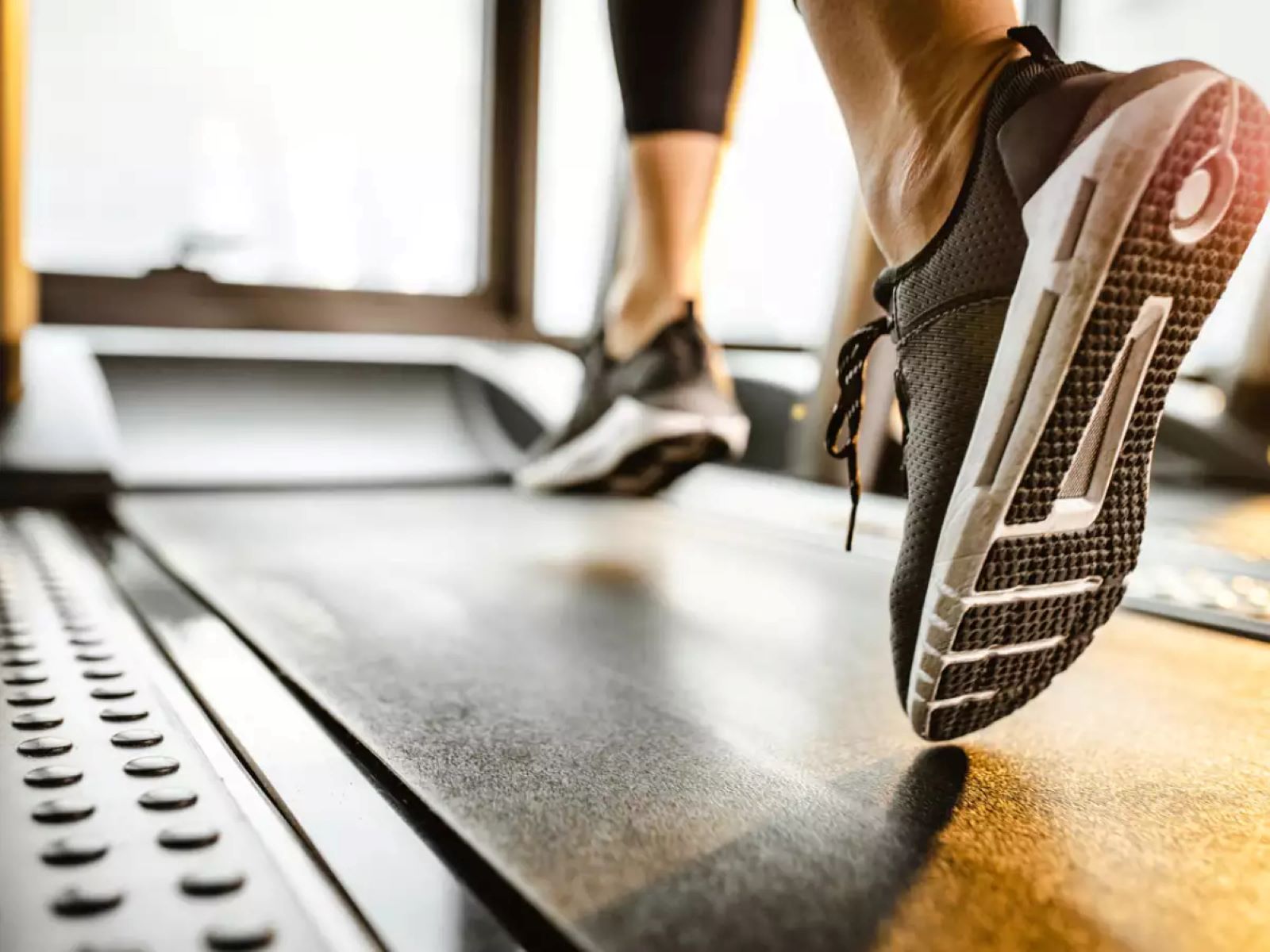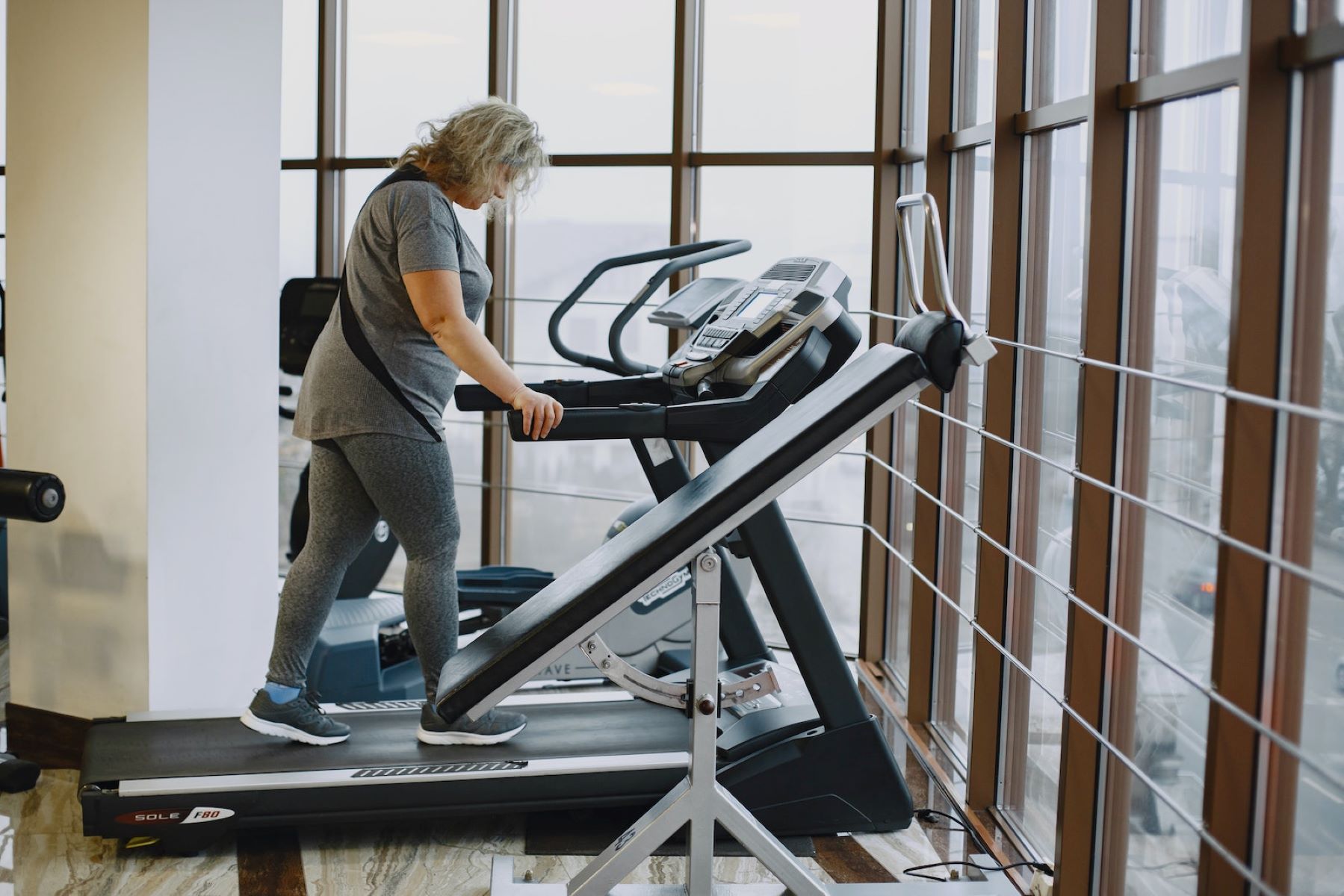

Featured
How To Lose Belly Fat On A Treadmill
Modified: August 21, 2023
Learn how to lose belly fat using a treadmill, with our featured guide. Maximize your workout and shed those extra pounds effectively and safely.
Introduction
Welcome to our comprehensive guide on how to lose belly fat on a treadmill. Treadmills are a popular and effective tool for achieving weight loss and toning your midsection.
Belly fat, also known as visceral fat, is not only a cosmetic concern but also a health risk. Excess belly fat has been linked to various health conditions such as heart disease, diabetes, and certain cancers. That’s why it’s essential to take proactive steps to reduce it.
Using a treadmill is an excellent way to target belly fat because it offers a cardiovascular workout that helps burn calories and increase overall fitness. Additionally, treadmill workouts can be adjusted to accommodate different fitness levels and goals.
In this guide, we will explore the benefits of using a treadmill to lose belly fat, how to set up your treadmill for optimal results, different types of workouts to try, and safety tips to keep in mind. Whether you’re a beginner or an experienced fitness enthusiast, this guide will provide you with valuable insights to help you reach your fitness goals and achieve a leaner midsection.
Before we dive into the specifics, it’s important to note that losing belly fat requires a combination of regular exercise, a healthy diet, and lifestyle modifications. While the treadmill can play a significant role in burning calories and strengthening your core, it should be part of a holistic approach to weight loss.
Now, let’s get started on your journey to a fitter, leaner you!
Understanding Belly Fat
Before we delve into how to lose belly fat on a treadmill, it’s important to understand what belly fat is and why it can be so stubborn to lose.
Belly fat, also known as visceral fat, is the fat that accumulates around your abdominal organs. While some amount of belly fat is normal and serves as a protective cushion for your organs, excess belly fat can be detrimental to your health.
There are two types of belly fat: subcutaneous fat and visceral fat. Subcutaneous fat sits just beneath the skin and is relatively harmless. On the other hand, visceral fat lies deeper within the abdominal cavity, surrounding organs such as the liver, pancreas, and intestines.
Visceral fat produces hormones and chemicals that can disrupt the normal functioning of your body. It increases the risk of developing chronic diseases like heart disease, type 2 diabetes, and certain types of cancer. Additionally, it can lead to insulin resistance and metabolic disorders.
Several factors contribute to the accumulation of belly fat, including genetics, hormonal imbalances, poor diet, inactivity, and high-stress levels. Unfortunately, belly fat can be particularly stubborn to lose, as it tends to be more metabolically active and resistant to traditional weight loss methods.
The good news is that with dedication and the right approach, you can start to lose belly fat and improve your overall health. Using a treadmill can be a powerful tool to target this specific area, as it engages your core muscles and helps you burn calories.
Now that you have a better understanding of belly fat, let’s explore the benefits of using a treadmill for your fitness journey.
Benefits of Using a Treadmill
Using a treadmill as part of your fitness routine offers numerous benefits for overall health and specifically targeting belly fat. Let’s take a closer look at some of the advantages:
- Convenience: One of the primary benefits of using a treadmill is the convenience it offers. With a treadmill at home or at the gym, you have the freedom to exercise at any time that suits your schedule, regardless of the weather.
- Cardiovascular Health: Treadmill workouts provide an effective cardiovascular exercise that elevates your heart rate and strengthens your cardiovascular system. Regular cardio workouts not only help burn calories but also enhance heart health and reduce the risk of heart diseases.
- Calorie Burning: Running or brisk walking on a treadmill is an excellent way to burn calories. By increasing the intensity of your workout, you can create a calorie deficit that can lead to weight loss, including the reduction of belly fat.
- Targeting Belly Fat: Treadmill workouts engage your core muscles, including the abdominal muscles, helping to tone and strengthen your midsection. As you burn calories during your treadmill sessions, your body starts to utilize stored fat, including visceral fat in the belly area, contributing to a trimmer waistline.
- Versatility: Treadmills offer a versatile platform for a variety of workouts. You can create customized interval training sessions, incorporate incline training, or even try different cardio exercises like jogging, running, or power walking. This versatility allows you to mix up your routines and prevent boredom.
- Progress Tracking: Many modern treadmills come equipped with built-in monitors and apps that allow you to track your progress. You can monitor your speed, distance, calories burned, and even create fitness goals. Being able to track your progress can be highly motivating and help you stay on track.
- Low Impact Option: For individuals with joint issues or injuries, treadmills provide a low impact option compared to activities like running on concrete or pavement. The cushioned surface of a treadmill helps absorb shock and reduces strain on your joints, making it a safer choice for many.
As you can see, incorporating a treadmill into your fitness routine offers a wide range of benefits. Now, let’s move on to setting up your treadmill for optimal results.
Setting Up Your Treadmill
Properly setting up your treadmill is essential to ensure safety, comfort, and effective workouts. Here are some steps to follow when setting up your treadmill:
- Choose the Right Location: Select a suitable location for your treadmill that provides enough space for you to move comfortably. Ensure there’s proper ventilation and adequate floor support.
- Check the Power Source: Make sure your treadmill is connected to a grounded outlet that can handle the power requirements of the machine.
- Adjust the Incline and Speed: Before stepping onto the treadmill, familiarize yourself with the controls. Adjust the starting incline, speed, and any other settings depending on your fitness level and workout plan.
- Warm-Up: Always start your treadmill workout with a warm-up. This can include 5-10 minutes of light cardio exercises like walking or slow jogging. Warming up prepares your muscles and reduces the risk of injury.
- Proper Foot Placement: Position your feet evenly on the treadmill and maintain a neutral posture. Avoid leaning forward or backward too much as it can strain your back or affect your balance.
- Practice Good Form: Use your arms naturally while walking or running on the treadmill. Swing them slightly from the shoulders to engage your upper body and maintain balance.
- Monitor Your Heart Rate: If your treadmill is equipped with heart rate monitoring sensors, make use of them. Monitoring your heart rate helps you stay within your target heart rate zone for optimal calorie burning and cardiovascular benefits.
- Stay Hydrated: Keep a water bottle nearby to stay hydrated throughout your workout. It’s important to replenish fluids lost during exercise.
- Use Safety Features: Familiarize yourself with the emergency stop button and how to use it in case of any accidents or discomfort during your workouts. Safety is a priority.
- Clean and Maintain: Regularly clean your treadmill to prevent dust and debris build-up. Follow the manufacturer’s instructions for maintenance to keep your treadmill in good working condition.
By following these guidelines, you’ll be able to set up your treadmill correctly and create a safe and productive workout environment. Next, let’s move on to warm-up exercises to prepare your body for the treadmill workout.
Warm-Up Exercises
Before diving into your treadmill workout, it’s crucial to properly warm up your body. Warm-up exercises help increase blood flow to your muscles, loosen up your joints, and prepare your body for the upcoming workout. Here are some effective warm-up exercises:
- March in Place: Start by standing upright with your feet hip-width apart. Lift your knees toward your chest, alternating sides, as if you’re marching in place. Continue for 2-3 minutes to gradually raise your heart rate and warm up your leg muscles.
- Jumping Jacks: Stand with your feet together and arms at your sides. Jump up, spreading your feet wider than shoulder-width apart, and raise your arms overhead. Jump back to the starting position. Repeat this motion for 1-2 minutes to engage your entire body and increase your heart rate.
- Arm Circles: Stand with your feet shoulder-width apart and extend your arms out to the sides at shoulder level. Make small circles with your arms, gradually increasing the size of the circles. After 10-15 seconds, change the direction of the circles. This exercise helps warm up your shoulders, arms, and upper body.
- Leg Swings: Stand next to a wall or sturdy object for support. Swing one leg forward and backward, gradually increasing the range of motion. Repeat this motion for 10-12 swings and then switch to the other leg. Leg swings help loosen up your hip flexors and improve flexibility.
- Dynamic Stretching: Perform dynamic stretches that mimic the movements you’ll be doing during your treadmill workout. For example, walking lunges, high knees, or butt kicks. These stretches help improve flexibility and warm up specific muscles.
Remember, warm-up exercises should be gentle and gradually increase in intensity. Aim to perform these exercises for about 5-10 minutes before getting on the treadmill. Warm-up exercises not only help prevent injuries but also improve the effectiveness of your workouts.
Now that you’re warmed up and ready to go, let’s dive into different treadmill workout options to help you lose belly fat.
Interval Training Workouts
Interval training is a highly effective method for burning calories and targeting belly fat on a treadmill. With interval training, you alternate between high-intensity bursts of exercise and periods of active rest or lower intensity. This approach keeps your heart rate elevated, increasing calorie expenditure and boosting your metabolism. Here are two interval training workouts to try on your treadmill:
- High-Intensity Interval Training (HIIT): Begin with a 5-minute warm-up at a moderate pace. Then, increase the speed or incline and sprint at maximum effort for 30 seconds to 1 minute. Follow it up with 1-2 minutes of active recovery, such as walking or slow jogging. Repeat this cycle for 10-15 minutes, gradually increasing the number of intervals as your fitness level improves. Finish with a 5-minute cool-down at a slower pace.
- Pyramid Intervals: Start with a 5-minute warm-up, and then progressively increase the intensity or incline every minute until you reach your maximum effort. For example, begin at a moderate pace and increase the speed or incline every minute for 5 minutes. Then, decrease the intensity or incline every minute for the next 5 minutes. Repeat this pyramid pattern for 15-20 minutes. Finish with a 5-minute cool-down.
These interval training workouts on the treadmill not only help burn calories and promote weight loss but also target belly fat by engaging your abdominal muscles. Remember to listen to your body and adjust the intensity and duration based on your fitness level and comfort.
Interval training is just one way to leverage your treadmill for efficient belly fat loss. In the next section, we’ll explore steady-state cardio workouts as an alternative option.
Steady-State Cardio Workouts
Steady-state cardio workouts on a treadmill provide an effective way to burn calories and reduce belly fat. Unlike interval training, steady-state cardio involves maintaining a moderate intensity throughout the duration of the workout. This sustained effort helps improve endurance, increase fat burning, and strengthen your cardiovascular system. Here are a few examples of steady-state cardio workouts to try on your treadmill:
- Brisk Walking: Start with a 5-minute warm-up at a comfortable walking pace. Gradually increase your speed to a brisk walk that challenges you but allows you to maintain the pace. Aim for a duration of 30-60 minutes, depending on your fitness level and goals. You can adjust the incline for added intensity.
- Jogging: Begin with a 5-minute warm-up, and then transition into a light jog. Maintain a steady pace that allows you to sustain a conversation without being too breathless. If needed, adjust the speed or incline to find a comfortable jogging intensity. Aim for a duration of 20-45 minutes.
- Running: If you’re an experienced runner, running on a treadmill can be an excellent way to burn calories and target belly fat. Start with a 5-minute warm-up at a moderate pace, and then gradually increase your speed to a challenging running pace. Maintain this pace for 20-45 minutes.
During steady-state cardio workouts, it’s important to monitor your heart rate to ensure you’re in the aerobic zone. This is the zone where you’re working within your target heart rate range, promoting fat burning and cardiovascular fitness. Adjust the speed or incline as needed to maintain the appropriate heart rate intensity.
Remember, consistency is key when it comes to steady-state cardio workouts. Aim to incorporate these workouts into your weekly routine 3-5 times a week for optimal results. By staying committed and gradually increasing the duration and intensity of your workouts, you’ll be well on your way to losing belly fat and improving overall fitness.
In the next section, we’ll explore the benefits of incorporating incline training into your treadmill workouts.
Incorporating Incline Training
In addition to speed and intensity, incorporating incline training into your treadmill workouts can significantly boost the effectiveness of your belly fat loss journey. By raising the incline, you engage more muscles, increase the intensity of your workouts, and burn more calories. Here’s how you can incorporate incline training into your treadmill sessions:
- Hill Intervals: Begin with a 5-minute warm-up at a moderate pace. Gradually increase the incline to a challenging hill setting and maintain it for 1-2 minutes. Then, decrease the incline to give yourself an active recovery period for 1-2 minutes. Repeat this cycle for 10-15 minutes. Finish with a 5-minute cool-down at a lower incline.
- Steady Incline Walk: Instead of focusing on speed, set a moderate incline that challenges you. Walk at a comfortable pace while maintaining the incline for 30-60 minutes. This steady incline walk engages your glutes, hamstrings, and calf muscles, providing a strength and cardio workout in one.
- Incline Sprints: Start with a 5-minute warm-up at a comfortable pace. Increase the incline to a challenging level and sprint for 30 seconds to 1 minute. Reduce the incline and take an active recovery period for 1-2 minutes. Repeat this cycle for 10-15 minutes. Finish with a 5-minute cool-down.
By incorporating incline training into your treadmill workouts, you target additional muscle groups, such as your glutes and calves, while increasing the intensity of your exercises. This not only aids in burning more calories but also helps build strength and endurance.
Gradually increase the incline as your fitness level improves, but remember to listen to your body and adjust the intensity accordingly. It’s important to maintain proper form and avoid holding onto the treadmill for support, as this reduces the effectiveness of the workout.
Now that you’ve learned the benefits of incorporating incline training, let’s move on to tracking your progress and setting goals.
Tracking Progress and Setting Goals
Tracking your progress and setting goals is essential when it comes to losing belly fat on a treadmill. It helps you stay motivated, measure your achievements, and make adjustments to your workout routine as needed. Here are some tips for effectively tracking progress and setting goals:
- Keep a Workout Journal: Maintain a journal or use a fitness tracking app to record your treadmill workouts. Note the duration, distance, speed, incline, and any other relevant details. This will allow you to see your progress over time and identify areas for improvement.
- Measure Body Metrics: Take regular measurements of your waist circumference, as well as other key areas like hips and thighs. This will help you track changes in your body shape and monitor your progress more accurately than relying only on the number on the scale.
- Set Realistic Goals: Establish achievable goals that are specific, measurable, attainable, relevant, and time-bound (SMART goals). For example, aiming to lose 1-2 inches off your waist measurement in the next 8 weeks or completing a certain number of treadmill workouts per week. Set both short-term and long-term goals to keep yourself motivated along the way.
- Celebrate Milestones: Celebrate your achievements, no matter how small. When you reach a milestone, such as completing a certain number of workouts or losing a few inches off your waist, reward yourself with something that aligns with your fitness goals, like new workout gear or a relaxing massage.
- Track Non-Scale Victories: Don’t solely rely on the number on the scale to measure your progress. Pay attention to non-scale victories like increased energy levels, improved stamina, better sleep quality, and enhanced mood. These indicators can be just as important and motivating as seeing changes in weight or measurements.
- Regularly Reassess and Adjust: Regularly reassess your goals and make adjustments to your workout routine as needed. If you find that your progress is plateauing, consider changing up your treadmill workouts, increasing the intensity or duration, or adding strength training exercises to your routine.
Remember that everyone’s journey is unique, and it’s crucial to focus on your own progress rather than comparing yourself to others. Stay committed, stay positive, and keep pushing yourself to achieve the goals you’ve set.
Now that you have the tools to track your progress and set goals, let’s explore some safety tips to ensure a safe and injury-free treadmill workout.
Safety Tips
When using a treadmill, it’s important to prioritize safety to prevent injuries and ensure a smooth workout experience. Here are some safety tips to keep in mind:
- Warm-Up and Cool Down: Always start your treadmill workouts with a proper warm-up and end with a cool-down. This helps prepare your muscles for exercise and gradually return your heart rate to normal.
- Use Safety Features: Familiarize yourself with the emergency stop button and know how to use it in case of any accidents or discomfort during your workouts. Also, ensure that the treadmill is equipped with safety features such as a safety clip or key that can be attached to your clothing for automatic shutdown in case of a fall.
- Maintain Proper Form: Keep your posture upright, shoulders relaxed, and head facing forward while walking or running on the treadmill. Avoid leaning too far forward or backward, as this can lead to injuries or loss of balance.
- Stay Hydrated: Drink water before, during, and after your treadmill workout to stay adequately hydrated. It’s important to replenish fluids lost through sweat to prevent dehydration.
- Wear Proper Attire: Choose comfortable, moisture-wicking clothing and supportive footwear to ensure optimal comfort and reduce the risk of blisters or other foot injuries. Avoid loose clothing that could get caught in the treadmill’s moving parts.
- Start Slow and Gradually Increase: If you’re new to treadmill workouts, start with a slow pace and gradually increase the intensity or duration over time. Listen to your body and don’t push yourself too hard too quickly.
- Use the Handrails Sparingly: Holding onto the handrails while walking or running on the treadmill can alter your natural gait and reduce the effectiveness of your workout. Only use the handrails for support when absolutely necessary, such as regaining balance.
- Keep the Area Clear: Ensure that the space around your treadmill is clear of any objects or obstacles that may pose a tripping hazard. This includes cords, water bottles, or any other items that could potentially get in the way during your workout.
- Listen to Your Body: Pay attention to any pain, discomfort, or signs of fatigue during your treadmill workouts. If you experience any unusual symptoms, stop exercising and consult a healthcare professional if necessary.
- Regular Maintenance: Keep your treadmill in good working condition by following the manufacturer’s maintenance guidelines. Regularly inspect the machine for any loose parts or signs of wear and tear.
By following these safety tips, you can create a safe and injury-free treadmill workout environment. Remember, it’s always better to prioritize your well-being over pushing yourself too hard. Now that you’re equipped with safety knowledge, let’s wrap up this comprehensive guide.
Conclusion
Congratulations on completing this comprehensive guide on how to lose belly fat on a treadmill! We’ve covered various aspects, from understanding belly fat to incorporating different types of workouts and prioritizing safety. Now, you have a wealth of knowledge to embark on your journey towards a fitter and leaner midsection.
Remember, losing belly fat requires a multi-faceted approach that combines regular exercise, a healthy diet, and lifestyle modifications. While the treadmill can be a powerful tool in your arsenal, it is just one aspect of a holistic weight loss plan.
Utilize the benefits of using a treadmill, such as convenience, cardiovascular health, calorie burning, and core engagement, to enhance your workouts. Experiment with interval training and steady-state cardio workouts to challenge your body and maximize calorie expenditure. Incorporate incline training to target more muscle groups and intensify your workouts.
Throughout your fitness journey, make sure to track your progress, set realistic goals, celebrate milestones, and adjust your routine as needed. Safety should always be a top priority, so follow the safety tips provided and listen to your body.
Remember, everyone’s weight loss journey is unique, and it’s important not to compare yourself to others. Stay dedicated, stay consistent, and trust the process. Losing belly fat takes time, patience, and perseverance.
Now, it’s time to take action! Dust off your treadmill, lace up your shoes, and start implementing the knowledge and strategies you’ve gained here. Be proud of yourself for taking this step towards a healthier, stronger, and more confident you.
Best of luck on your journey to losing belly fat on a treadmill! You have everything you need to succeed. Keep pushing yourself, stay motivated, and enjoy the process of becoming the best version of yourself.





